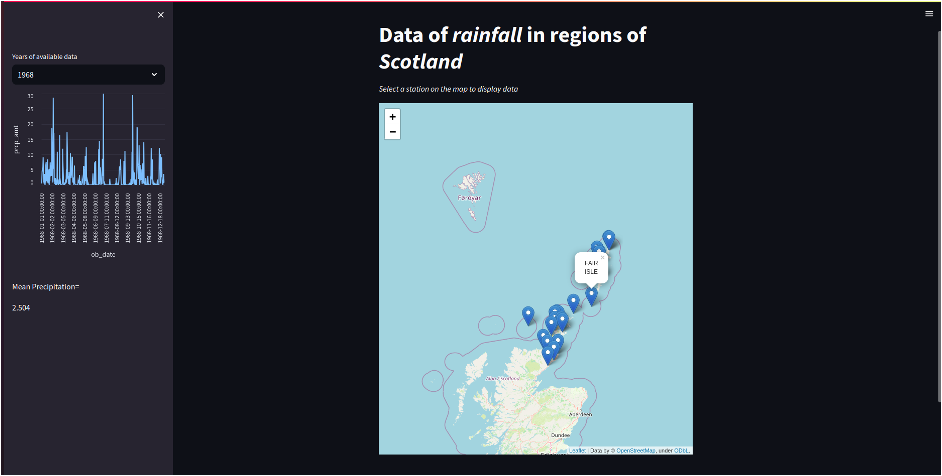
In2science Student Placements at the Christabel Pankhurst Institute
By Emma Simpson, Research Software Engineer for NERC Digital Solutions.
As part of my role as a Research Software Engineer for University of Manchester Research IT department I am working on the NERC Digital Solutions Programme based in the Christabel Pankhurst Institute.
The programme aims to build an online tool which allows easy access and discovery of 1000s of environmental datasets as well as the ability to combine environmental data with health and other socioeconomic data to provide insights into how we interact with the environment and how the environment effects us.
For one week in August, I hosted 3 year 12 students as part of the In2science program. In2science aims to promote social mobility and diversity in STEM subjects by provide young people from low-income and disadvantaged backgrounds an opportunity to gain practical insight into the STEM sector as well as the knowledge and confidence to progress to university.
My role as host of an In2science placement included providing the students with: the opportunity to shadow me in my role as a Research Software Engineer (RSE), a practical project to work on that is related to my role at the university, the chance to interact with other researchers and staff across the university, and an insight into life as a student and/or research staff at the university.
To achieve this the students joined me in my workplace in the Christabel Pankhurst Building. The new building provided the perfect space where the students had their own assigned desks for the week in an open plan workspace. The flexibility of the space and relaxed, collaborative atmosphere allowed me to work closely with the students on their project as well as giving them a true insight into working as a member of staff at the university. One student commented that they ‘didn’t expect the environment to be so calm and friendly’.
As part of the placement, the students worked on developing a web app to display historical rainfall data at a series of weather stations across the country. The motivation for this project came from the NERC Digital Solutions Programme, which aims to increase accessibility and usability of 1000s of environmental datasets.
The project gave the students the opportunity to experience several aspects for the software engineering lifecycle including requirements gathering – thinking about who the users of the web app will be and what their needs are; design – how will the requirements be met in the app; and prototyping – designing and building a working product.
The students developed the app in the Python programming language, and even though they did not all have much experience in the language, produced an impressive web app that included a dropdown menu of available data, an interactive map where a user could click on a weather station of interest, and a graph of the selected rainfall data. This was a great achievement in such a short period of time. At the end of the placement, the students confidently demonstrated their working web apps to colleagues in the Pankhurst Building.
Another aspect of the student placement was meeting with academic researchers and other RSEs. The students were given a tour of atmospheric science research facilities including the Whitworth Observatory on the roof of George Kenyon Building, the Manchester Ice Cloud Chamber and the Manchester Aerosol Chamber in Simon Building, by Dr Mike Flynn, Senior Technical Specialist in the Centre of Atmospheric Science.
They also met with Dr Mychel Morais, a researcher in the School of Biological Science whose field is proteomics; Dr Chris Fullerton, an RSE whose work has recently focused on bringing AI and machine learning to SMEs; and Dr Adrian Harwood, the head of the RSE team in IT Services. Through these meetings, the students learnt about different areas of active research at the university, the different roles available within STEM subjects, and the different pathways colleagues have taken to their current roles.
I really enjoyed the week. It allowed me to practice my communication and teaching skills, which I can utilise in my role as an RSE. The students fed back that the placement gave them real world insight into working as a software engineer. It also confirmed that the choice of pursuing a degree, and career in computer science, is right for them. Overall, the placement was a great experience.




0 Comments